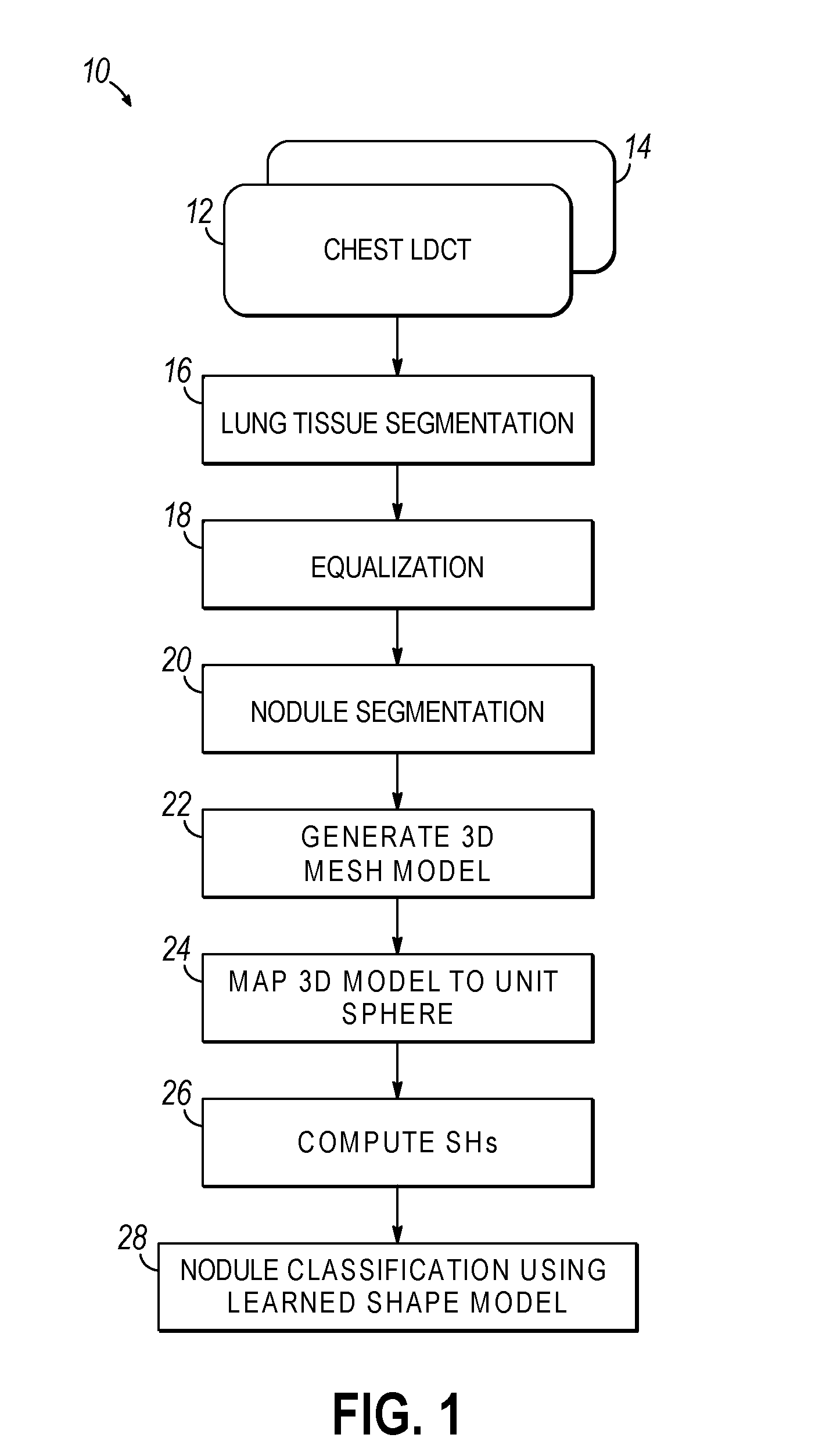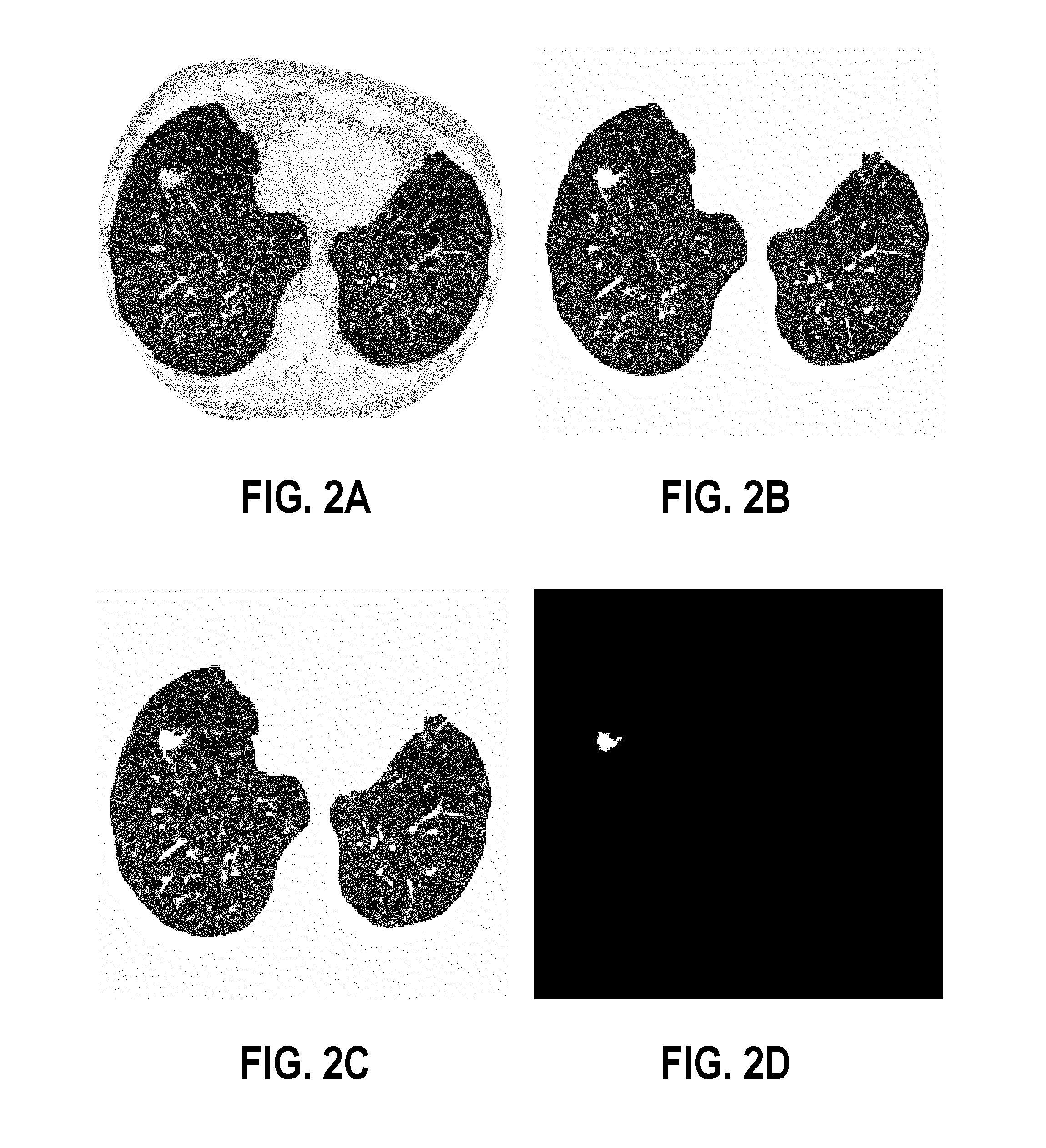Computer aided diagnostic system incorporating shape analysis for diagnosing malignant lung nodules
a computer-aided diagnostic system and shape analysis technology, applied in image analysis, image enhancement, instruments, etc., can solve the problems of reducing mortality rates, difficult to distinguish true nodules from shadows, and difficulty in computer-aided image data search schemes,
- Summary
- Abstract
- Description
- Claims
- Application Information
AI Technical Summary
Benefits of technology
Problems solved by technology
Method used
Image
Examples
working example
[0058]To justify the proposed methodology of analyzing the 3D shape of both malignant and benign nodules, the above proposed shape analysis framework was pilot-tested on a database of clinical multislice chest LDCT scans of 327 lung nodules (153 malignant and 174 benign). The CT data sets each have 0.7×0.7×2.0 mm3 voxels, with nodule diameters ranging from 3 mm to 30 mm. Note that these 327 nodules were diagnosed using a biopsy (the ground truth).
[0059]FIGS. 8A-L illustrate results of segmenting pleural attached nodules shown by axial (FIGS. 8A-D), sagittal (FIGS. 8E-H) and coronal (FIGS. 8I-L) cross sections. The pixel wise Gibbs energies in each cross section are higher for the nodules than for any other lung voxels including the attached artery. Therefore, the approach separates accurately the pulmonary nodules from any part of the attached artery. The evolution terminates after 50 iterations because the changes in the total energy become close to zero. The error of segmentation ...
PUM
 Login to View More
Login to View More Abstract
Description
Claims
Application Information
 Login to View More
Login to View More - R&D
- Intellectual Property
- Life Sciences
- Materials
- Tech Scout
- Unparalleled Data Quality
- Higher Quality Content
- 60% Fewer Hallucinations
Browse by: Latest US Patents, China's latest patents, Technical Efficacy Thesaurus, Application Domain, Technology Topic, Popular Technical Reports.
© 2025 PatSnap. All rights reserved.Legal|Privacy policy|Modern Slavery Act Transparency Statement|Sitemap|About US| Contact US: help@patsnap.com



